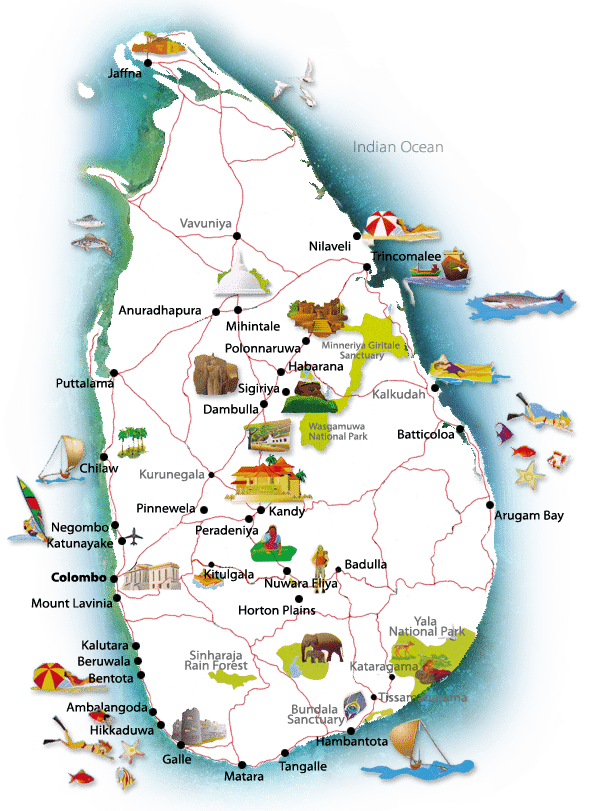Negombo City
Negombo
Negombo
Negombo is the major tourist destination in Western Province, Located close to the Bandaranaika International Airport, Negombo has become a tourism hub since the tourism boom in the seventies. With the influence of Portuguese, Dutch and English, Negombo has become one of the biggest Catholic bases in the island. Popularly known as the ‘Little Rome’, it was a humble fishing village half a century ago. The 100km canal network running through the city is still used in the fishing industry. Negombo boasts of many touristic aspects and it has earned this title as it is a coastal arena consisting of an immense crowd of Catholics. As a result, there are ancestral Roman architectural cathedrals to the churches to small chapels beautifully constructed all over the region. The fading pink chamber of St Mary’s church, in the town center has some thunderous ceiling paintings covering the nave of the Church is one of the biggest attraction for tourist around the world. Outrigger canoes and modern watercraft ply this route daily, for fishing industry and tourism. With a stash of star class hotels and restaurants to suit all pockets, a friendly local community, an interesting old quarter and a reasonable (though polluted) beach, Negombo is a much easier place to experience the real Sri Lankan – colonial mix culture, then anywhere else.
The Dutch captured the town from the Portuguese in 1640, lost it, and then captured it again in 1644. The British then took it from them in 1796 without a struggle. Negombo was one of the most important sources of cinnamon during the Dutch era, and there are still reminders of the European days. The busy center of Negombo town lies to the west of the bus and train stations. Most places to stay, however, line the main road that heads north from the town center, running almost parallel to the beach. Negombo is home to the country’s second largest fish market, locally famous as the ‘Lellama’ at the north end of the lagoon. There are daily fish auctions, which give tourists a chance to meet the areas fishers, buy fish and even organize fishing trips into the lagoon and the ocean beyond. Other nearby attractions open to visitors include Muthurajawela Marshland, which is part of a 14,826 acres. The protected mangroves of the lagoon are home to over 190 species of wildlife.
Negombo offers one of the best beaches on the west coast of Sri Lanka. It draws tourists who stop over for few days on their way to from the airport. Some quiet stretches of the beach are maintained by the tourist hotels, while others are always busy with fishermen and their equipment. Water-sports and diving are popular among visitors, with a few well-preserved coral reefs and a 50 years old shipwreck that can be seen in the distance also known as Kudapaduwa that serves as an artificial reef for many varieties of fish. Mora-Wala and Beach Park are very popular among Sri Lankan travelers. Each day, fisherman take their traditional oruwa or modern day boats and go out in search of the fish for which Negombo is well known. They’re a fine sight as they sweep home into the lagoon after a fishing trip. Fish auctions on the beach and sales at the fish market near the Fort are a slippery and very smelly sight, but one that’s well worth forgoing some swimming pool time for. The catch is not all from the open sea: Negombo is at the northern end of a lagoon that is renowned for its lobsters, crabs and prawns. Across the lagoon bridge there’s a second fish market. If you can stagger out of bed at 6.00am, it’s a good place to watch much bigger fishing boats return with their catches. Close to the seafront near the lagoon are the ruins of the old Dutch fort, which has a fine gateway inscribed with the date 1678. Also here is a green, called the Esplanade, where cricket matches are a big attraction. As the fort grounds are now occupied by the town’s prison, the only way you’ll get a peek inside is by stealing something, said the guards at the gate, when we inquired about a visit inside.
Contact Info


